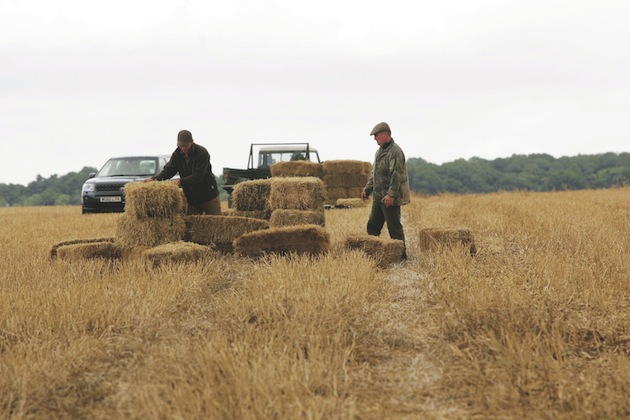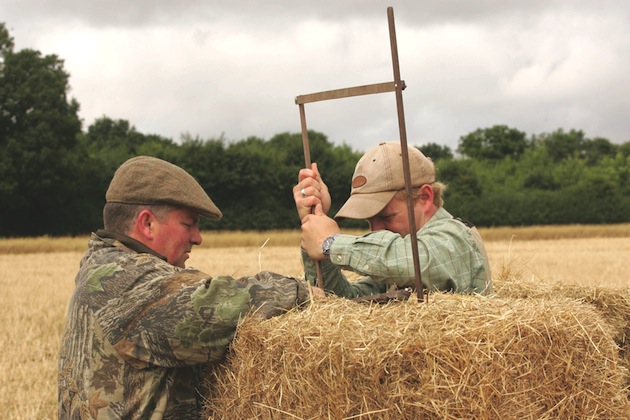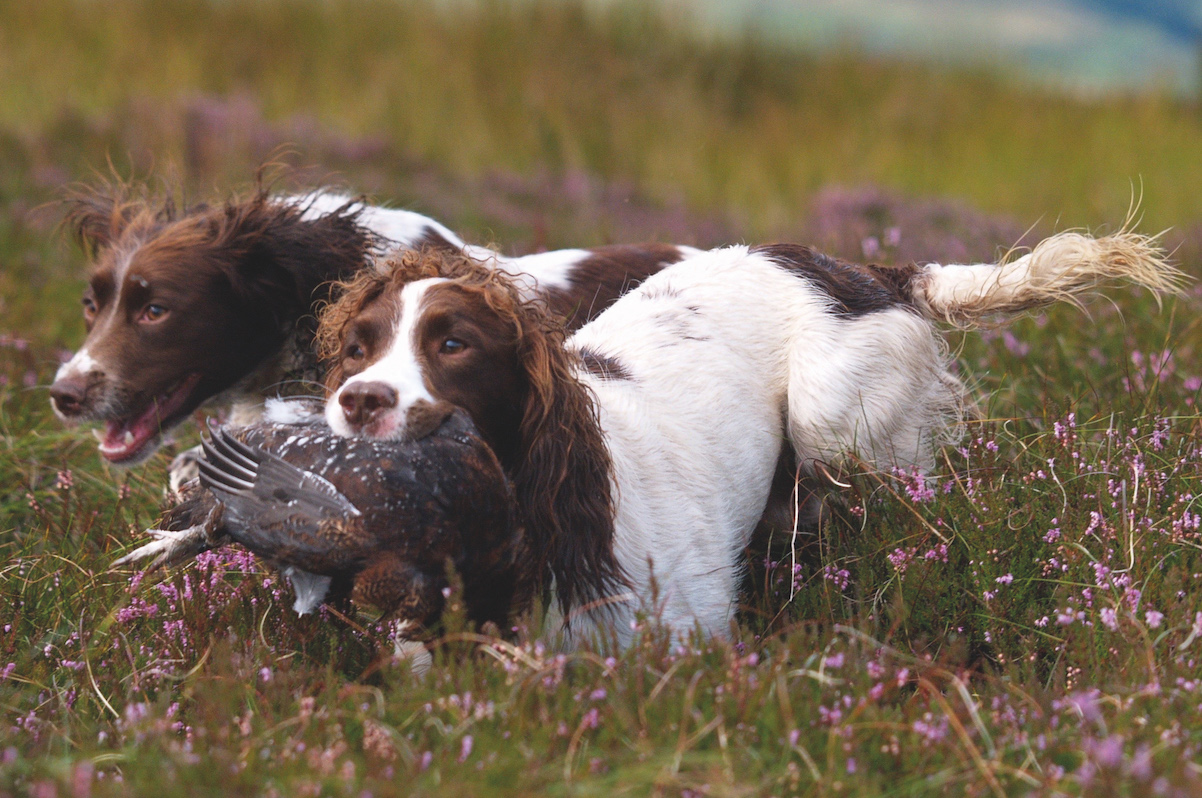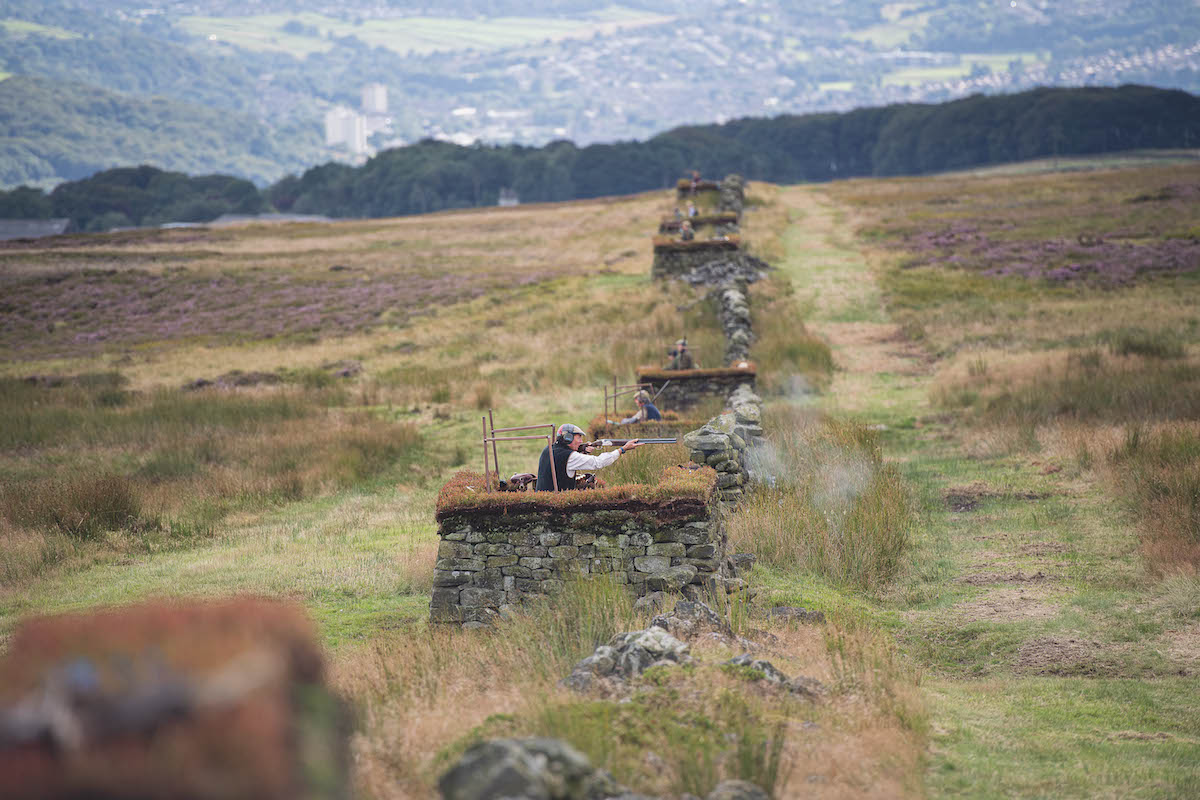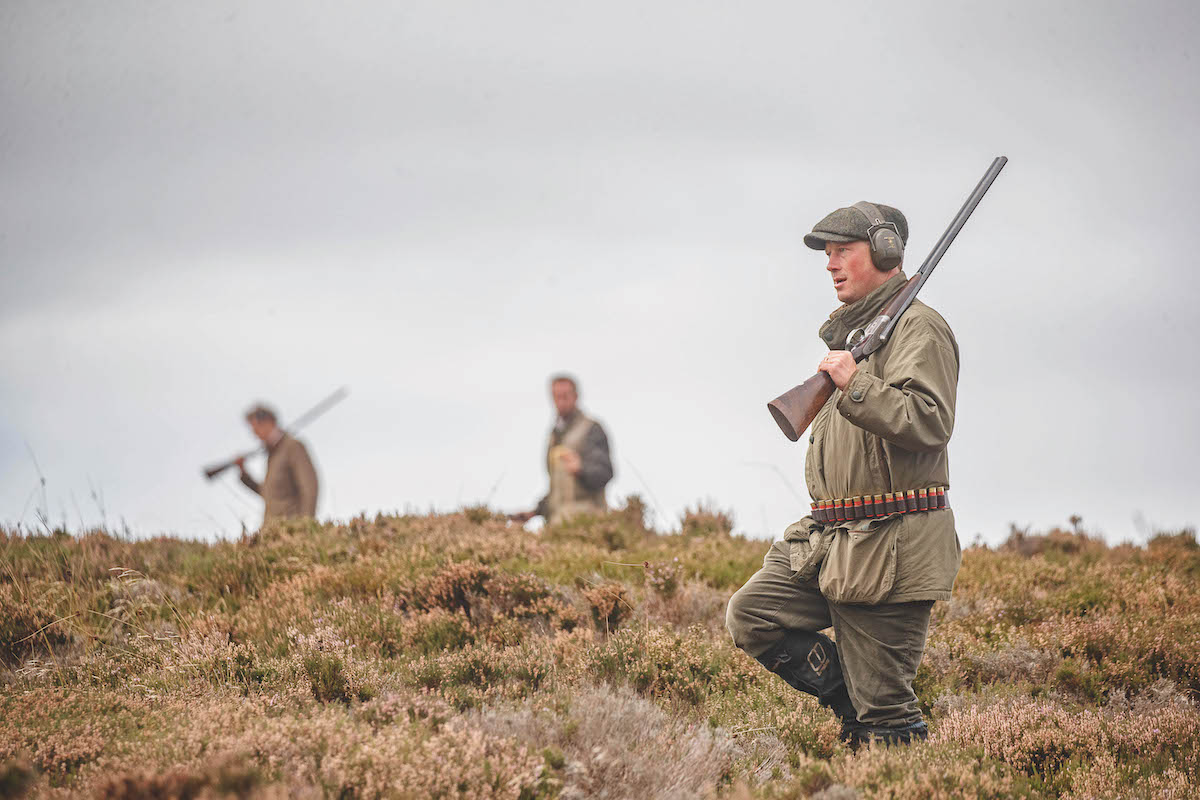Pigeon or grouse – which is the more sporting bird?
Unable to decide whether he preferred shooting pigeon or grouse, Tom Payne experimented by turning a field of rape stubble into a grouse moor
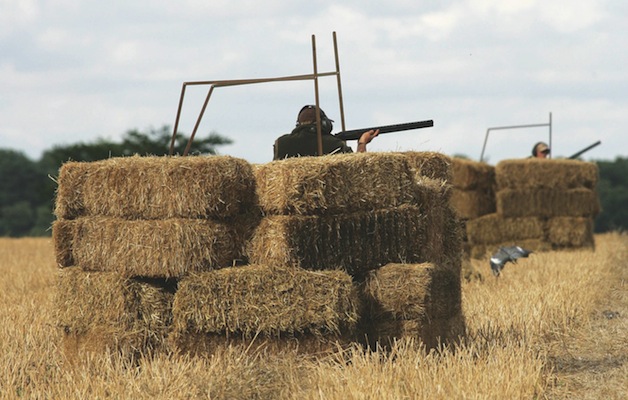
South-westerly winds of 19mph were the key to getting pigeon into a grouse-shooting situation
Among the lucky shooters who have shot both grouse and pigeon, there is a long-standing debate about which of these birds takes the more skill to shoot and provides the most testing sport. During a conversation with a friend at The CLA Game Fair, I came up with a fairly adventurous idea to see if this debate could be laid to rest.
Pigeon or grouse?
Having been lucky enough to have shot grouse in most months of their season and in some very testing weather conditions, I find it difficult to decide between the two. However, decoying pigeon is very different from standing in a grouse butt, keeping a 360° watch on what’s going on, making sure you are alert and that you cover your safe angles of fire from both the front and back of the butt at all times. Yes, pigeon offer speed, angles and an ability to flare like no other bird, but I needed a more robust way to compare them to decide for myself which of the two is the more sporting bird. Would one come out the winner in my view? This is how, in the first week of the 2013 grouse season, I did something very different. I turned a field of rape stubble into a grouse moor.
The planning
On 14 August, a good friend, headkeeper Stephen Booth, helped me to prepare for the task. My idea was to shoot over three-day-old rape stubble, which was now attracting plenty of interest from the local pigeon population. My aim was to shoot on the following day, as weather conditions were looking favourable for the task ahead: 19mph south-westerly winds were, I thought, the key to my attempt to get pigeon into a grouse-shooting situation.
I had decided to build two small bale hides, each consisting of 23 bales, about 60 yards apart, facing down the field with the wind off our backs. Getting a hold of 46 small bales is a feat in itself these days. It is rare to shoot from bale hides, as normally bales are taken off the fields quickly, but even rarer to shoot from bale hides made from small bales. There is just not the demand for small bales unless you are based in a very horse-oriented area.
Stephen spent the entire morning of the 14th locating 46 bales. Then we had to go and pick them up in his Land Rover. It is not advisable to stack 46 bales on the back of a 110 but, amazingly, we didn’t lose a single one on the way back.
Setting up a pigeon magnet
Tom Payne has been using more pigeon magnets this year than in the previous six because they work so well.…
The Pigeon Shooter’s Code
The conditions were great for an afternoon’s pigeon flighting. We decided to hop into photographer Oli Lees’s pickup as I…
Birds had started feeding on the chosen field from about 10.30am onwards. My aim was to let a few birds arrive and feed, then take the bales out and build the two hides, giving the pigeon the rest of the afternoon to feed around the two butts. I had chosen a mixture of mainly small hay bales, as these blend into rape stubble well. I watched the arriving birds for the rest of the afternoon, working out the best way to decoy them, and really studying their behaviour.
This exercise was not about getting a bird to decoy, but about getting them to fly straight at us using the wind to split through the line. This was not going to be easy. I was happy with the location of my two hides, decided on with previous reconnaissance. The lines coming to the field were being consistent — not a huge amount of traffic, but enough. The wind speed was about 8mph on the 14th. I knew that their behaviour in a stronger wind the next day could be interesting.
Shoot day
We arrived at Stephen’s at 9am on the morning of the 15th. My team-mate for the two days was Charlie Allen, a good friend and the person with whom I had had the original conversation. Charlie is experienced in being in a grouse butt and, as a friend who has spent a lot of time with me in a pigeon hide, was the perfect choice for this exercise. After coffee and a chat about the plan of attack, we headed up to the field. We were hoping to be ready and shooting by 12.30 with all final checks undertaken.
The decoy pattern
As mentioned, my aim was to encourage the oncoming pigeon to fly through the line of the two butts. With the wind off my back, I chose to place myself behind the middle of the two butts. I used a magnet as the centrepiece, surrounded by 12 dead birds. I then placed a flapper in front of each butt. I was creating a funnel that would make the birds head straight up the middle. As I was behind the centre line of the butts, any birds arriving with the wind would fly over me to turn back into the wind. By using the wind conditions, I would stop any birds settling in front of, or behind, the butts.
The scene was set. Charlie and I took up our positions. Safety was a priority, just as on a moor. We placed our butt sticks and double-checked to make sure that both of us were happy with the situation. As always, housekeeping was paramount, with only guns, seats, cartridges and a bottle of water in the butts. The last thing you want is clutter around your feet, which makes a shooting situation dangerous. I knew that if this worked we were going to be doing a lot of moving.
The shooting
Well, it was truly incredible! I couldn’t believe how well it worked. Birds approached in singles, pairs and small packs, bursting through the line using the wind. Most of the birds were killed from the front, and one of us would turn to shoot any that managed to get through. We worked well and very safely as a team to maximise the shooting. The pigeon provided every angle, speed and distance you could ever wish for. At one point, I was sweating with the intensity of the shooting. The concentration required was something I had never experienced before, in a grouse butt or pigeon hide. All-round vision was needed at all times, the busiest period being the last two hours of the day.
At the close of play, Charlie simply said: “Epic. Truly epic”
At the end of the first day, 110 woodpigeon and 23 feral pigeon were picked — 66 ½ brace. At the close of play, Charlie simply said: “Epic. Truly epic.”
On day two we attempted it again on a different part of the estate to see if it had just been a fluke. This time we set up from scratch in the morning. The wind was not as strong but the sport was just as amazing: 133 woodpigeon, 27 ferals and a rook — 80½ brace.
From the point of view of safety, an exercise like this should never be carried out unless all the participants are very experienced in this type of shooting situation. This one was carried out with complete confidence in everyone involved.
In conclusion, which bird comes out on top? Both grouse and pigeon are phenomenal flyers, but there is no bird that can offer every possible shooting angle, speed and height in the way the woodpigeon can. I strongly believe it is our finest all-round sporting bird.
Thanks
Special thanks must go to Stephen Booth for being a fantastic help and host for the three days, to Paul Quagliana, the photographer, who shot a cracker of a rook, and to Charlie, who really kept up his end of the bargain in his butt. It was a memorable three days for all those involved. Our total was 294 picked — 149 brace.

